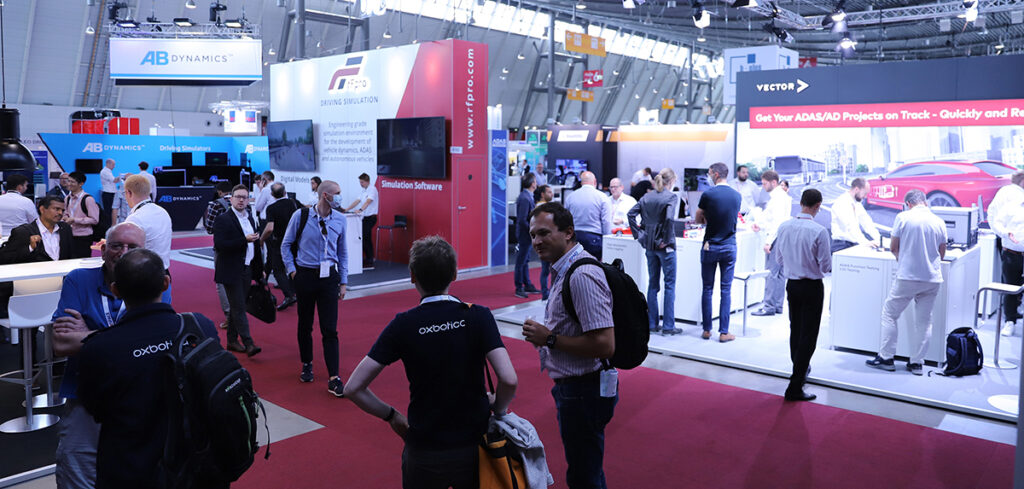Three years since the last event, ADAS & Autonomous Vehicle Technology Expo returned to Stuttgart, Germany, on June 21, 22, and 23, providing the perfect platform for a host of new product launches and the latest innovations from some of the industry’s leading suppliers.
Held at the Messe, the fourth edition of the event showcased the latest technologies from over 150 exhibitors to enable and accelerate end-to-end autonomous and ADAS applications, including testing tools, simulation, software, sensing and AI.
Meanwhile, a three-day conference program featured 80 speakers across two dedicated tracks: AV Test and Development; and Autonomous Vehicle AI, Software and Sensor Fusion. Presentation highlights included Mapping change: new approaches to map maintenance for AD applications from Woven Planet’s head of OEM delivery, Nicola Consolati; Waymo’s approach to ensuring safe deployment of fully autonomous driving technology from Dr Trent Victor, director of safety research and best practices at Waymo; and Leveraging AI in modern sensor fusion applications, from Continental AI Development Center’s Dr Árpád Takács, sensor fusion group leader, autonomous mobility.
New product launches
Highlights from the show floor included aiMotive’s latest generation of its automated driving full software stack, aiDrive 3.0, featuring in-house, model-space-based perception, which the company says is the foundation for higher-level automation but achieves much more than that. It is an innovative system for the data-driven evolution of both direct model-space-based perception and multi-sensor fusion, supported by a fully automated annotation pipeline. “This represents a fully data-driven evolution, including multi-sensor fusion, which reduces complexity and computing resource needs,” revealed Gábor Pongrácz, aiDrive senior vice president, live at the expo.
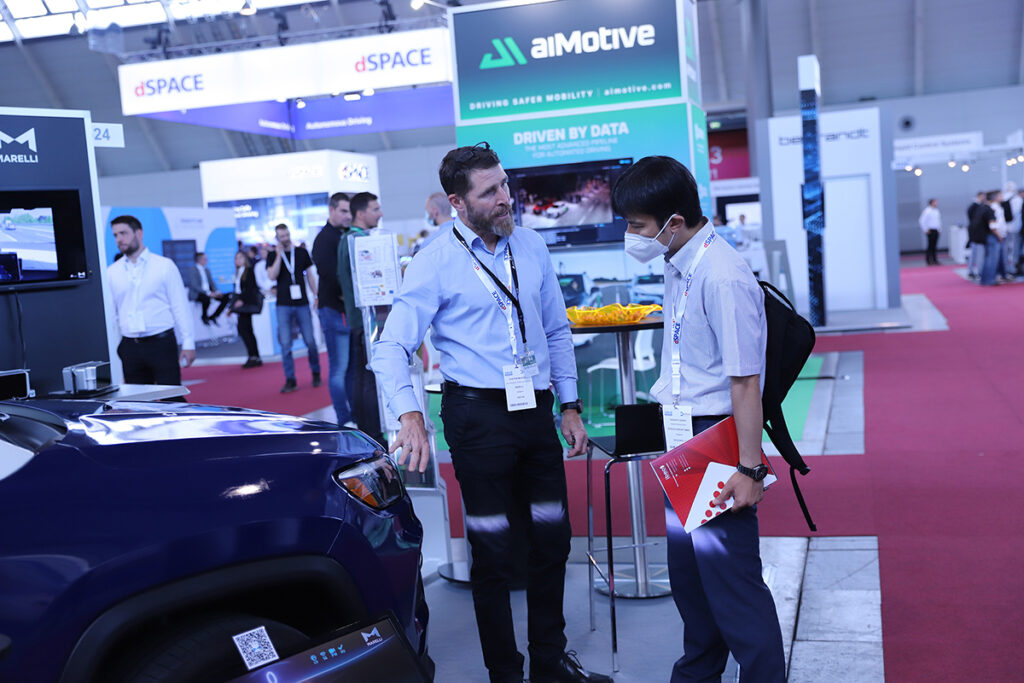 Bence Boda, marketing & communications manager at aiMotive, was extremely pleased with how the expo went: “It was a great event in Stuttgart, with lots of exciting discussions at our booth, which we hope will lead to collaborations, partnerships and business opportunities in the near future. All in all we were really happy with how the expo turned out to be. We brought two live demos, a front camera perception stack with Texas Instruments and our in-house developed aiSim simulator, the first in the world to achieve ISO26262 certification. Both demos attracted a lot of interest, and it was clear from the feedback that our validation and verification solution is unique – which was confirmation for us that we are on the right track. The organizing team is great not only in the organization itself, but also in the marketing and communication activities surrounding the event – so I think that anyone who announces a new product or solution at this event can be confident that the information will reach the most important target audience.
Bence Boda, marketing & communications manager at aiMotive, was extremely pleased with how the expo went: “It was a great event in Stuttgart, with lots of exciting discussions at our booth, which we hope will lead to collaborations, partnerships and business opportunities in the near future. All in all we were really happy with how the expo turned out to be. We brought two live demos, a front camera perception stack with Texas Instruments and our in-house developed aiSim simulator, the first in the world to achieve ISO26262 certification. Both demos attracted a lot of interest, and it was clear from the feedback that our validation and verification solution is unique – which was confirmation for us that we are on the right track. The organizing team is great not only in the organization itself, but also in the marketing and communication activities surrounding the event – so I think that anyone who announces a new product or solution at this event can be confident that the information will reach the most important target audience.
“Since ADAS & Autonomous Vehicle Technology Expo in Stuttgart and in California attract different OEMs and T1s, we wanted to cover both continents with a list of promising potential customers and partners – that’s why we decided to be part of the first event in California.”
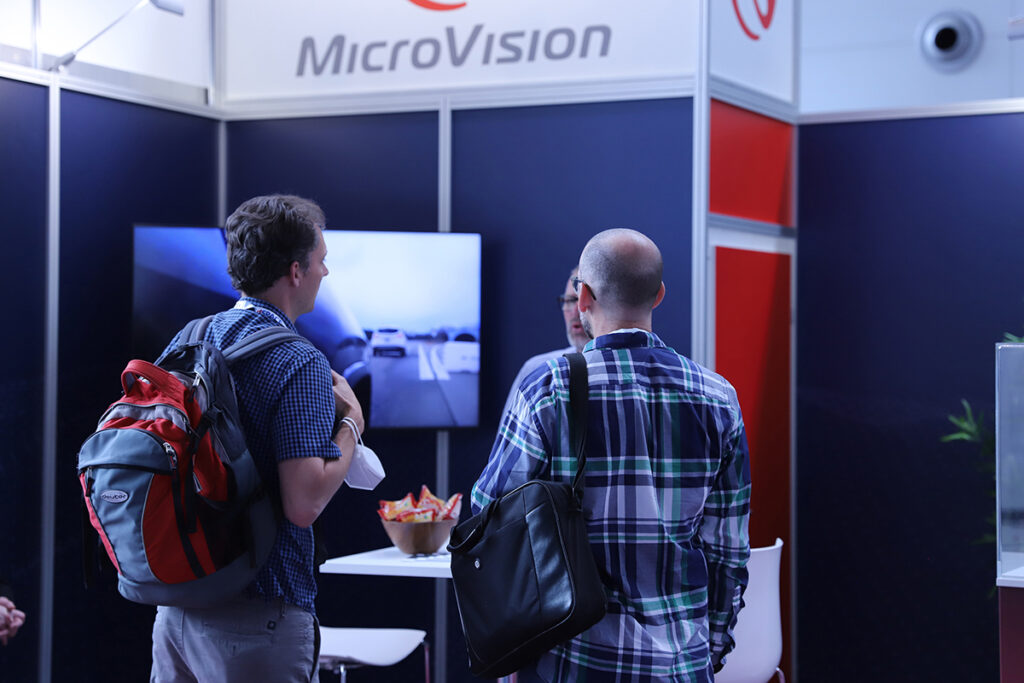 A new generation of sensors was introduced by MicroVision, developed with an OEM-friendly design to enable high-speed highway safety features. The MAVIN DR is a dynamic-view lidar system that will enable new ADAS safety features, meeting the need to see further with greater clarity and respond more quickly to emerging situations. It is the first sensor to offer a dynamic range, combining short-, medium- and long-range sensing and fields of view into one form factor. The low-latency point cloud (30Hz) means the MAVIN product line allows ADAS systems to respond more quickly and take action at high speeds.
A new generation of sensors was introduced by MicroVision, developed with an OEM-friendly design to enable high-speed highway safety features. The MAVIN DR is a dynamic-view lidar system that will enable new ADAS safety features, meeting the need to see further with greater clarity and respond more quickly to emerging situations. It is the first sensor to offer a dynamic range, combining short-, medium- and long-range sensing and fields of view into one form factor. The low-latency point cloud (30Hz) means the MAVIN product line allows ADAS systems to respond more quickly and take action at high speeds.
AIMMO launched its Smart Labeling technology to the European market at the expo, stating it can significantly reduce the time between data acquisition and availability of high-quality training data, enabling new scenarios, locations and edge cases to be trained faster. The use of deep learning algorithms to support the labeling process reduces the time required to provide results back to the OEM. Areas where challenges are found during testing and validation can be overcome quickly, progressing the program at pace. “AIMMO’s deep learning based AI inspection can speed up the data curation process by up to 50% and data labeling up to 80% faster,” emphasized David Marks, head of sales [Europe] during the expo. “Repetitive and easy class processing is already yielding excellent results; the results for more complex class processing are increasing continually as the deep learning model evolves.”
A new cloud platform that can manage data from simulations and real-world driving and provide a full ADAS lifecycle management platform was displayed by Cognata. The platform enables large-scale regression testing, training perception pipelines, scenarios classification and failures analysis to be performed. “Our simulation provides two main use cases: smart large-scale regression testing for validating ADAS functions, and synthetic data for training perception and control stacks,” explained Cognata’s CEO and founder, Danny Atsmon. “Cognata’s user base is actively using the platform to solve both use cases.”
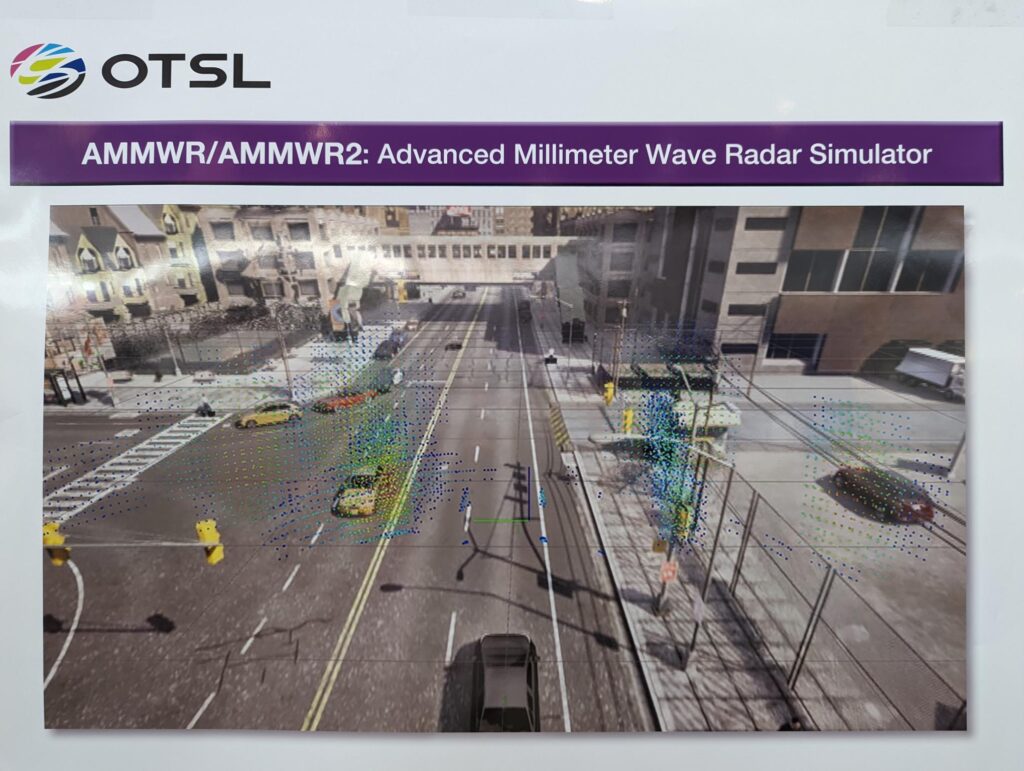
A new 3D real-time millimeter-wave radar simulator for autonomous driving, the AMMWR2 (Advanced Millimeter Wave Radar Simulator 2) was unveiled by OTSL. “With the global advance in application of autonomous driving, expectations are growing for advanced simulation technology capable of creating a virtual reproduction of all kinds of driving conditions, and verifying and validating safety and accuracy,” explained Shoji Hatano, CEO, OTSL and OTSL Germany. “However, the current autonomous driving vehicle has only Level 2 or Level 3 functions under the SAE International standards. To achieve fully autonomous driving via system monitoring, Level 5 of the standards, it is essential to include simulation of potential accidents caused by electronic device defect and sensor failures. AMMWR2, announced on June 17, is the only millimeter-wave radar sensor simulator that covers from the electronic device level, including semiconductors and sensors, to the autonomous driving (AD) and advanced driver assistance system (ADAS) simulation domain.”
AVL showcased its complete ADAS/AD portfolio, validation toolchain and proving ground. “At AVL, we have been working for several years on a broad portfolio covering tools for scenario-based virtual testing of ADAS and AD systems. Major cornerstones in this toolchain are the test planning tools and supporting various testing execution methods, especially vehicle-in-the-loop on testbeds,” revealed Roland Lang, AVL’s program manager for ADAS and AD business development, live at the show. “Last but not least, we are showing our ground-truth measurement system and sensor benchmarking system for open-road testing. In the vehicle-in-the-loop family, we are proud to show our new Steering Force Emulator that allows ADAS vehicles on the testbed to experience steering forces in a simulated environment.”
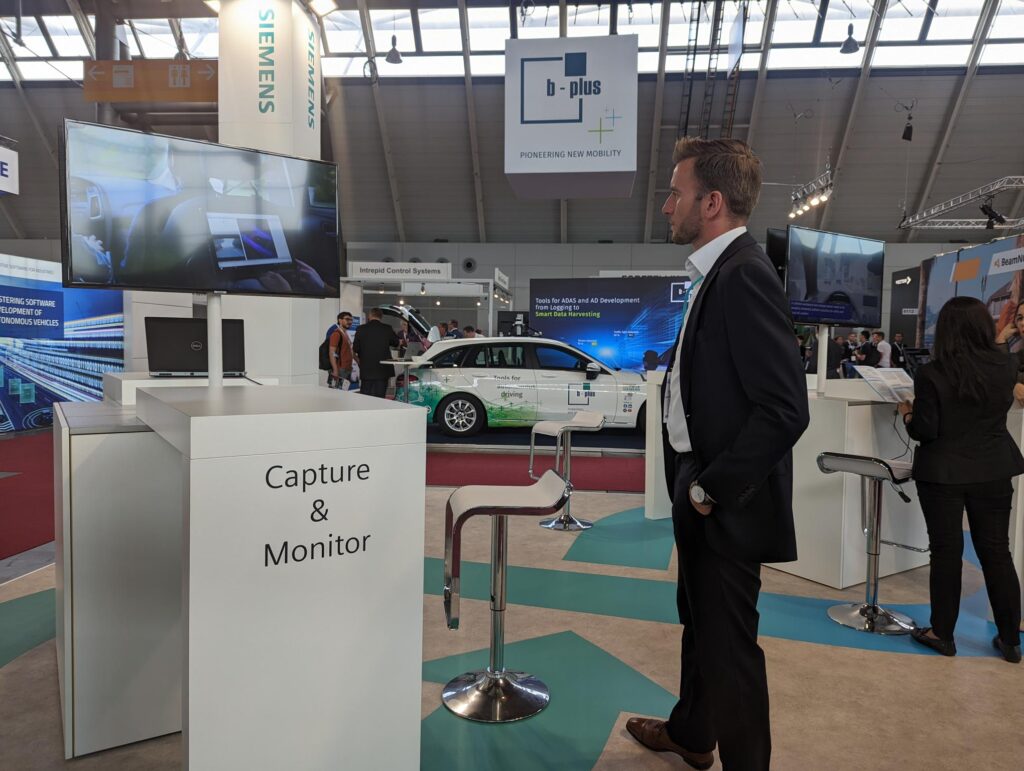 Siemens displayed its Simcenter Scaptor (sensor capture), which provides high-speed in-vehicle recording with a scalable and flexible hardware platform to capture, synchronize and store vast amounts of raw data under rugged test conditions. “When testing against relevant scenarios, typically a lot of time is lost on finding the appropriate scenarios to test against,” explained Robbert Lohmann, business development director of AV at Siemens. “Scaptor provides an integrated working toolchain from recording to data annotation and storage. The solution ensures that engineers can focus on actual testing instead of spending time on finding the right data.”
Siemens displayed its Simcenter Scaptor (sensor capture), which provides high-speed in-vehicle recording with a scalable and flexible hardware platform to capture, synchronize and store vast amounts of raw data under rugged test conditions. “When testing against relevant scenarios, typically a lot of time is lost on finding the appropriate scenarios to test against,” explained Robbert Lohmann, business development director of AV at Siemens. “Scaptor provides an integrated working toolchain from recording to data annotation and storage. The solution ensures that engineers can focus on actual testing instead of spending time on finding the right data.”
“Through Simcenter Scaptor we bring value to data, from recording to annotation, analysis and anonymization – combining the experience and leading solutions of expert parties,” added Robin van der Made, director of product management at Siemens, live on Day 1. Van der Made also presented on Day 3 at the Autonomous Vehicle Test & Development conference track.
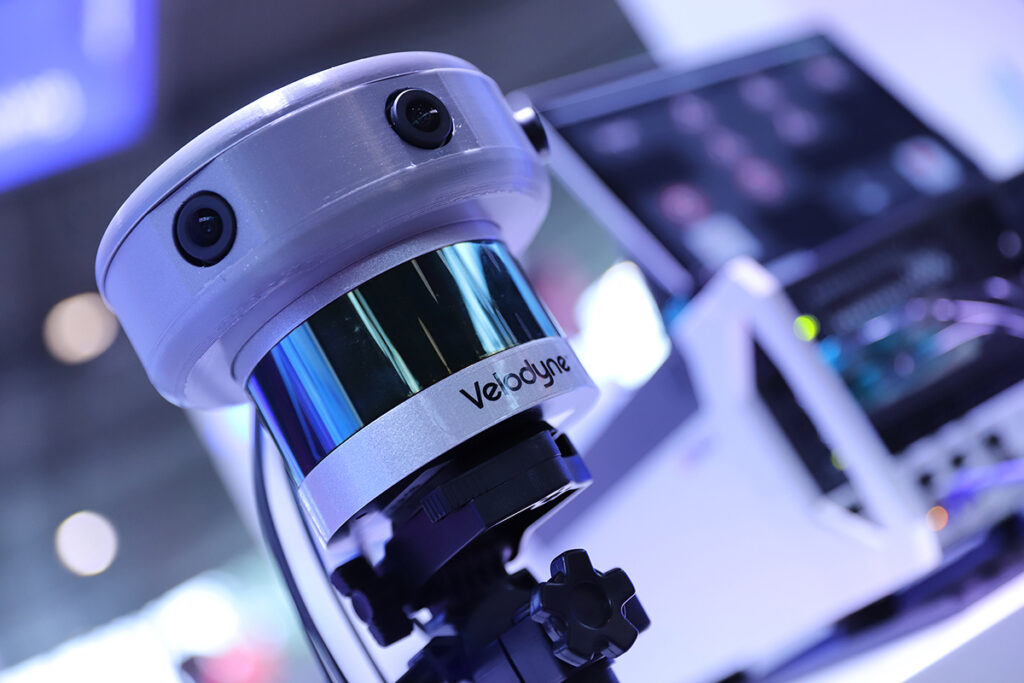 Velodyne Lidar EMEA presented its latest hardware and software solutions. Its Velarray M1600 solid-state sensor has been designed for autonomous applications in public, commercial and industrial environments and is optimized for accurate near-field detection for autonomous platforms. The sensor has outstanding near-field perception for safe navigation in a variety of environmental conditions in a detection range of 0.1-30m, with 10% reflectivity in maximum range and a wide 32° vertical field of view that enables smooth operation, even in areas with a lot of movement. Velodyne Lidar also revealed more about its Intelligent Infrastructure Solution (IIS) that combines AI and lidar. This breakthrough hardware+software technology is designed to solve some of the most challenging and pervasive infrastructure problems.
Velodyne Lidar EMEA presented its latest hardware and software solutions. Its Velarray M1600 solid-state sensor has been designed for autonomous applications in public, commercial and industrial environments and is optimized for accurate near-field detection for autonomous platforms. The sensor has outstanding near-field perception for safe navigation in a variety of environmental conditions in a detection range of 0.1-30m, with 10% reflectivity in maximum range and a wide 32° vertical field of view that enables smooth operation, even in areas with a lot of movement. Velodyne Lidar also revealed more about its Intelligent Infrastructure Solution (IIS) that combines AI and lidar. This breakthrough hardware+software technology is designed to solve some of the most challenging and pervasive infrastructure problems.
Visitors were shown how Elektrobit can help simplify the development process in ADAS testing with model-based and virtualized development. It aims to help companies develop profitable embedded software programs that will validate test drive scenes and avoid expensive simulation. The company states that its solutions are unique, as they reduce bottlenecks in the testing and validation process because bugs in coding can be detected and fixed early in the ECU. The company also shared more about its EB Assist ADTF partner program, an active collaboration of companies specialized in sensors, virtual test drives, automotive bus interfaces, datalogging and more.
Automotive Testing Expo highlights
A further 75 companies in Halls 8 and 10 at the adjoining Automotive Testing Expo exhibited ADAS- and AV-related technologies, such as Morai’s tailored digital twins in target locations for ADAS and AV testing. MORAI SIM: Drive is an innovative digital twin simulation platform tailored to ‘target locations’, and according to Morai, feedback from stakeholders and customers has been very positive.
Morai tech team leader Hyunjin Park revealed live at Automotive Testing Expo Europe that by using targeted simulation, the company has helped stakeholders and customers reduce real-world testing by 50%: “For a company that might drive six million miles to test a vehicle, they will instead drive three million miles, saving on costs. Morai uses its ADAS and AV simulation platforms to enable OEMs to test every single component beforehand, running software-in-the-loop, hardware-in-the-loop, and vehicle-in-the-loop tests for all three stages of development.”
The South Korean startup provides stakeholders with a simulation environment based on actual roads, sensor models and edge cases to test their ADAS. It uses HD map data from several companies and ingests it into its software suites, creating road meshes from that data in a fast, automated process.
“It was the first time Morai has exhibited at an automotive industry focused event with mostly international attendees; we wanted to meet partners specializing in testing hardware. There was so much interest from attendees and other exhibitors that we see Automotive Testing Expo as a key future event for product launches and promotions. Exhibiting at ADAS & Autonomous Vehicle Technology Expo [in California] will allow us to meet AV software and systems providers as well as other experts in automotive simulation.”
Dates for your diary
For more information and videos from this year’s event, click here. With the 2022 event a resounding success, dates have now been announced for 2023. ADAS & Autonomous Vehicle Technology Expo Europe 2023 will take place in Stuttgart, Germany, on June 13, 14 and 15. Save the dates now or contact the team to book your booth today.
Building on the success of the Stuttgart event, ADAS & Autonomous Vehicle Technology Expo and Conference will head to the McEnery Convention Center in San Jose for the first time on September 7 & 8, 2022. Don’t miss out, save the dates now to secure your place.


